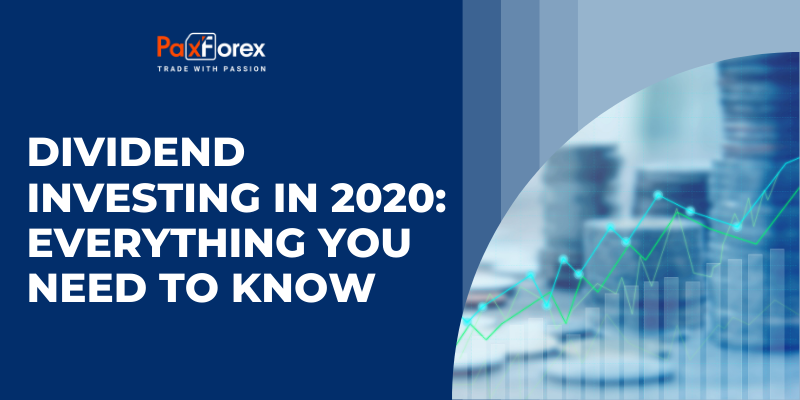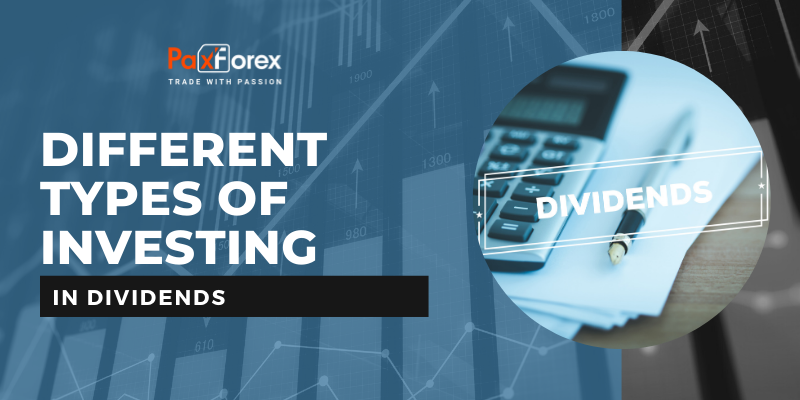
A modern investor is, before anything else, knowledgeable. Because even if you tend to focus on a rather limited assortment of trading instruments, having backup options is always a great idea. Since we’ve already started the conversation on stock investments, it makes sense to discuss dividend investing, a concept that affects your trading more than you thought.
Dividend Investing Explained
To fully comprehend what is a dividend investment, you’ll first have to grasp the idea of shares. In simple words, a share is a unit of ownership in the company. If you picture a company as a pie, shares are the slices that get divided by the original founders at first, and potentially among other investors who wished to finance the production.
The shareholders might have different sets of rights and responsibilities, depending on the company. For example, the executive board members will most likely hold shares and have a vote in any decision-making process. But regardless of their voting power, or lack thereof, every shareholder will be sincerely invested in the company’s well-being due to two crucial factors: the value of the share and the dividend payments.
The share’s value is important for very straightforward reasons. When a company is doing great, it proportionally reflects on the cost of its shares. For instance, Netflix, an online streaming platform, started getting more customers than ever with the unraveling of 2020s Coronavirus pandemic. As a result, it went from $290 per share in September 2019 to $482 in September 2020. You don’t have to be a math genius to conclude that NFLX was a pretty solid investment solution. Shall the investors liquidate their assets, they will end up with a visible profit.
Then there are dividends, the portions of the company’s income split between a select group of shareholders. The dividends also reflect the prosperity of the business, meaning that the better the company did, the higher will be the payment. Additionally, the size of the payment will depend on the company’s ambitions towards growth. Since the remaining profit is used for maintaining and developing the business, the shareholders can sometimes sacrifice a part of their dividend for the overall strategy.
The executive board will make a decision on dividends, specifically the amount of it. The decision-making usually happens in the form of a vote, just like the majority of other strategy altering moves that the board has to discuss. This way, for example, Disney’s board of directors postponed their semi-annual dividend payouts as a part of the anti-crisis measures during the pandemic.
At this point, we can deduce that investing in dividends is an act that aims to gather profits directly from the company’s income, rather than from the escalated value of its shares. Next, let’s look at the mechanics of the dividends investment process, starting with the payment schedule.
Dividend payment schedules
Anyone who looks to invest for dividends will know that such payments take place rather rarely. In the majority of cases, the dividend payout is semi-annual based on the performance of the respective preceding two quarters. However, there are also companies that distribute dividends yearly or quarterly.
In dividend investing, the payment schedule plays a crucial role, since before the board allocates the portion of profit to dividends, they have to identify the eligible shareholders. The so-called ‘record date’ is set as a deadline to outline the registered shareholders, and all potential investors should purchase the shares as well as make sure they are matching all the registration criteria at least two business days prior to that date.
The deadline before the record date is the ex-dividend date, and it is a noteworthy factor to consider for both those who invest for dividends and the stock traders. While dividend investors have to worry about getting everything ready before the payment is scheduled, retail traders need to align their trading with the date since the share value tends to go down around this time. But more on this later. Now, let’s consider all the types of dividends investment royalties to get the full picture of what dividend investors get access to.
Different Types of Investing in Dividends

Although the concept of dividend investing is pretty basic and unified across the industries, the payouts might not always happen the way you imagined. Depending on each particular company, the dividend can be anything from cold hard cash to a physical building. Below are the brief descriptions of the dividend investing payment options.
Cash is by far the most common type of dividends. The monetary value of the dividend percentage is transferred to the shareholder in the previously agreed-upon currency through a check, a bank transfer, or in a large drawstring back with a dollar sign on the side. The last one, of course, is an exaggeration, but you get the point.
Stock dividends are issued through an increase of the outstanding shares in case there is not enough operating cash. The bonus shares usually translate into higher power levels, and, later on, in proportionally higher dividends.
Property dividend is that case of giving a building away we mentioned earlier. When the company lacks operating cash but increasing the share number isn’t an appropriate solution, they might gift the shareholders with physical assets that the company no longer requires. These assets can be anything from inventory, equipment, real estate, etc.
Script dividends are written guarantees of postponing/rescheduling the payment to a specific future date, which occurs when the company needs more time liquidating the assets into cash and can’t succumb to any other option. Script dividends might bear interest, but that’s not always the case.
Bonds work similarly to scripts: a written guarantee of payment with the maturity date further in the future. But unlike scripts, in which interest isn’t a requirement, bonds are always bearing interest.
Liquidating dividends are perhaps the least exciting type of all, although it depends on the situation. In a nutshell, a company pays the initial investment back; this way, purchasing the share back. Usually, this process takes place prior to the business’ shut down, in case of continuous lack of demand, for instance.
As previously mentioned, the exact percentage of the dividend investment payouts is determined by the board of executives and approved through a shareholders’ vote.
Calculating Dividend Yield

Another small concept to get an idea about in dividends investment is the dividend yield. This number expressed as a percentage is a relationship between the amount paid out in dividends and the current share price. Although traditionally, the higher yields were more preferable, modern investors present a mix of opinions.
But while the idea of the yield percentage directly reflecting the investing power is up for debate, the dividend investors should still understand the mechanics of its calculation. The formula is: divide the annual (semi-annual or quarterly) dividend per share by the current share price and then multiply the result by a hundred.
Let’s say the company X paid $0.50 per share, and the current share price is $15. This way, we get: (0.5/15)*100=3.33%. The dividend yield for company X is less than 4%, which is generally considered low.
Dividend Investment Taxes
Now, a question that worries every investor, whether they are interested in dividend investing or not, is taxes. And here it all depends on where you are and what type of dividends you are receiving. Usually, the cash dividends are considered a return on capital and, therefore, are taxable. However, there is a possibility of a certain amount of money not being taxable, known as dividend allowance. Make sure you are familiar with the tax policies on dividend investment in your country before you proceed.
Indices and Dividend Investing
As previously mentioned, the dividends affect the share prices on the ex-dividend date, which makes them an important factor to observe even for those who are not investing in dividends. More specifically — indices traders.
If you are trading with individual indices, such as AAPL or MCD, the ex-dividend is easy to track, since most of the information is relatively public. A great tool for such tracking is called an economic calendar. Such a calendar collects all the scheduled events, report releases, planned news, and so on, in order to help the trader predict specific market conditions.
But what about DAX30 or S&P500, with each of them representing a large number of companies and their performance. Well, on the one hand, the sheer amount of information that such indices carry isn’t easily affected by one particular ex-dividend date. However, suppose it so happens that several companies have the same dividend schedules, which is very possible, especially for large index groups such as S&P500. In that case, the price drop can be quite visible.
CFDs
The non-professional traders, also known as retail traders, rarely take part in dividend investing. But there are other ways for them to benefit, and in some cases, get access to more optimal income than large scale traders. One of such solutions is CFD trading.
CFD is short for contracts for difference, and it is a trading tool that allows its investors to take advantage of any type of price movement. This way, while a traditional investor only profits off the price going up, CFD traders will gather income from the price drops as well. Find out more about CFD trading to explore all the available solutions.







